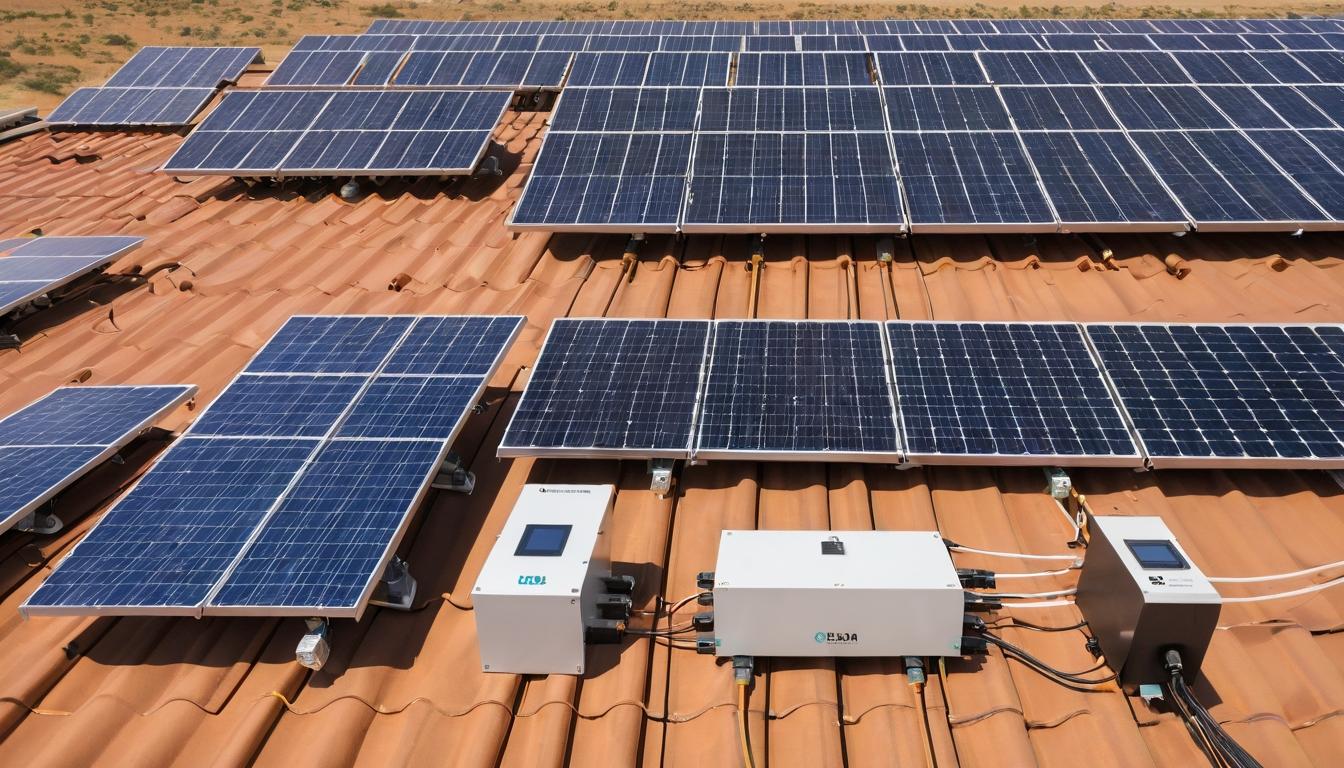Walking through the sprawling solar fields of California's Mojave Desert, you can almost hear the quiet hum of transformation. Rows of photovoltaic panels stretch toward the horizon, their dark surfaces drinking in the desert sun. This isn't just about generating electricity anymore—it's about rewriting the rules of energy itself. The solar industry has reached an inflection point that few could have predicted even five years ago, and the implications are staggering for homeowners, businesses, and the entire energy ecosystem.
What's driving this seismic shift isn't just environmental concern or government incentives—though those certainly help. The real story lies in the breathtaking pace of technological innovation and the corresponding freefall in costs. Solar panel prices have dropped by more than 80% over the past decade, making what was once a luxury item accessible to middle-class families across America. But the revolution doesn't stop at cheaper panels. We're witnessing breakthroughs in energy storage, smart inverters, and manufacturing techniques that are fundamentally changing how we think about power generation.
Take bifacial solar panels, for instance. These double-sided marvels capture sunlight from both sides, increasing energy production by up to 30% compared to traditional panels. They're particularly effective in snowy environments where reflected light boosts their performance, or in commercial installations with light-colored roofing materials. Manufacturers are pushing the boundaries even further with perovskite solar cells that promise higher efficiency at lower costs, though commercialization challenges remain.
The battery storage revolution might be even more transformative than the solar panels themselves. For years, the biggest knock against solar was its intermittency—the sun doesn't always shine when you need electricity. That argument is rapidly becoming obsolete as lithium-ion battery prices continue their dramatic descent. Homeowners can now store excess solar energy during the day and use it at night, effectively creating their own personal power plants. The combination of solar plus storage is creating energy independence that was unimaginable just a decade ago.
But the innovation doesn't stop at the hardware level. Software and monitoring systems have become the unsung heroes of the solar revolution. Advanced monitoring platforms now allow homeowners to track their system performance in real-time, receive alerts about potential issues, and even optimize their energy usage patterns. These digital tools are making solar systems smarter, more reliable, and easier to manage than ever before.
Financing models have evolved just as dramatically as the technology. The days of requiring massive upfront investments are fading fast. Solar leases, power purchase agreements (PPAs), and various loan options have democratized access to clean energy. Homeowners can now go solar with little or no money down, paying for the electricity their systems produce rather than the equipment itself. This shift has opened the market to millions of households that previously couldn't afford the initial investment.
The regulatory landscape is also undergoing significant changes, though not always smoothly. Net metering policies—which allow solar owners to sell excess electricity back to the grid—face ongoing challenges in various states. Some utilities argue that net metering shifts grid maintenance costs to non-solar customers, while solar advocates counter that distributed generation provides valuable benefits to the entire system. These battles are playing out in public utility commissions across the country, with significant implications for the future of rooftop solar.
Commercial and industrial solar installations are experiencing their own renaissance. Businesses are increasingly recognizing that solar isn't just good for the environment—it's good for the bottom line. Corporations like Amazon, Walmart, and Target are installing massive solar arrays on their distribution centers and stores, locking in decades of predictable energy costs while burnishing their sustainability credentials. The economics have become so compelling that even companies with no particular environmental agenda are jumping on board.
Community solar projects represent another exciting development, particularly for renters and homeowners with unsuitable roofs. These shared solar arrays allow multiple households to subscribe to a single installation, receiving credits on their electricity bills for their portion of the generated power. It's an elegant solution that expands solar access to virtually everyone, regardless of their housing situation.
Looking ahead, the integration of solar with electric vehicles creates fascinating possibilities. EV owners can effectively fuel their cars with sunshine, creating a completely clean transportation ecosystem. Some forward-thinking homeowners are already designing systems that power both their homes and vehicles entirely from solar energy, achieving a level of energy independence that was once the stuff of science fiction.
The workforce development story is equally compelling. The solar industry now employs more Americans than coal mining, and job growth continues to outpace the overall economy. These aren't just installation jobs—they include manufacturing, engineering, sales, project management, and maintenance positions. As the industry matures, career paths are becoming more defined and opportunities for advancement are expanding.
Despite all this progress, challenges remain. Supply chain issues, trade disputes, and interconnection delays can still hamper projects. The industry must also address end-of-life considerations for solar panels and batteries, developing robust recycling programs to ensure that today's clean energy solutions don't become tomorrow's waste problems.
What's clear is that we've moved beyond the early adopter phase. Solar energy has entered the mainstream, driven by compelling economics and relentless innovation. The question is no longer whether solar will play a significant role in our energy future, but how quickly it will transform our relationship with power generation altogether. The revolution isn't coming—it's already here, and it's shining brighter every day.
The solar revolution is here: How new technologies and falling costs are changing everything

